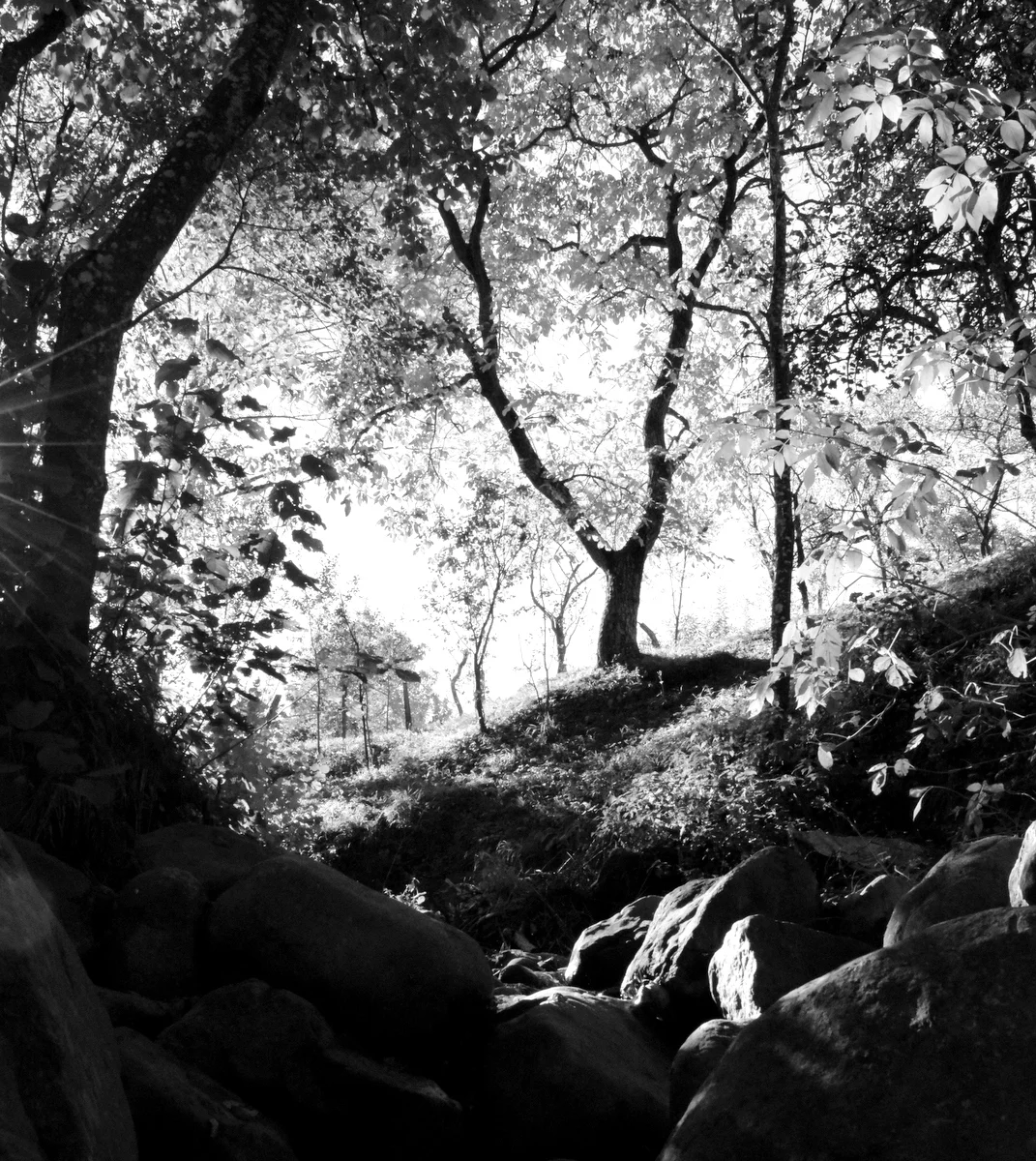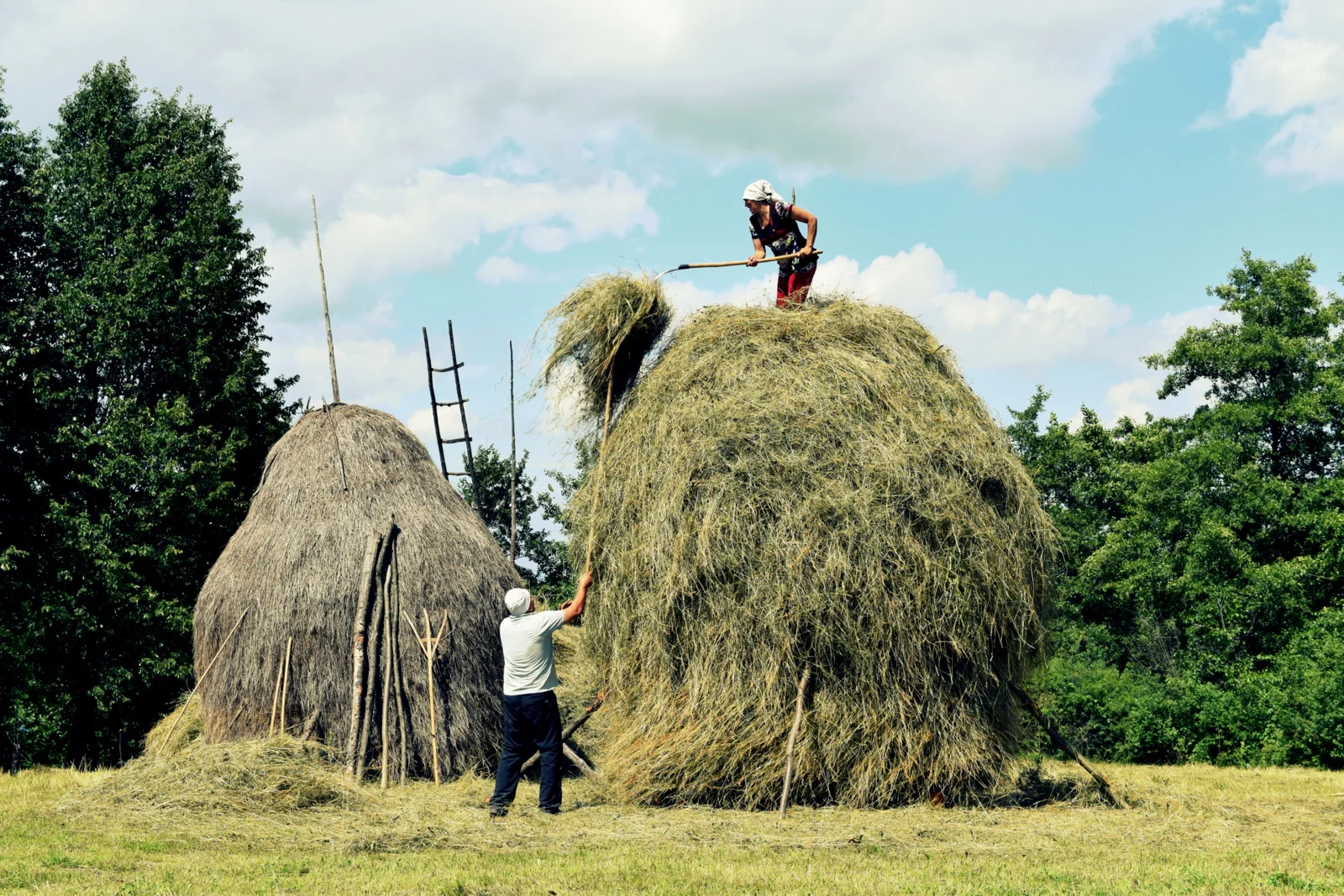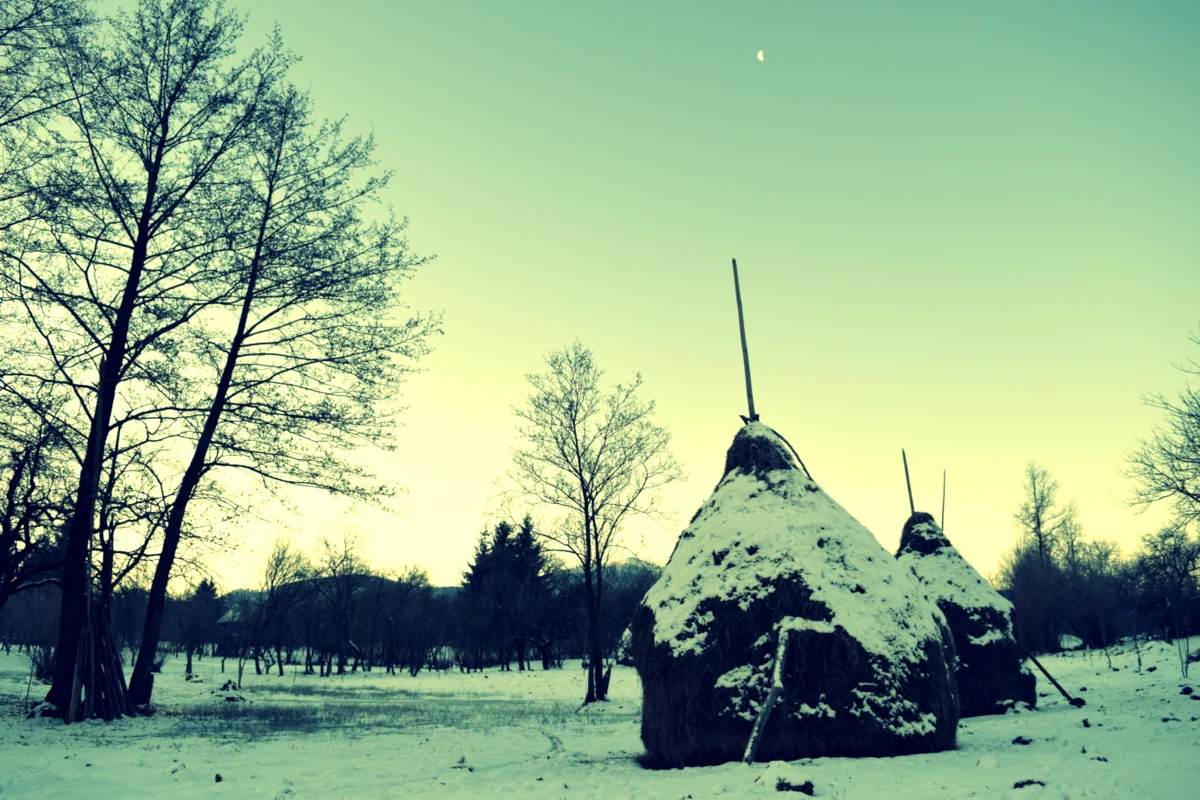Tis the season of profound dormancy in the wooded hills of northern Romania, yet the birds, deer, rabbits and foxes are so very alive - casting their whereabouts in the snow. Mice and other creatures are happily hiding underneath the great white blanket, nibbling grass seeds under haystacks and devouring their winter stores, out of sight and out of mind till the flowing melt begins...
Wheels ground to a halt this season when 45 cm of white, frosty flakes covered the roofs and lands in the course of one night. In a village with no plows, people took to brooms and shovels to make knee-deep paths in the snow. Promptly the horses and sleighs took over the arduous task of bringing freshly harvested alder and beech down from the woodlands during the week. On the weekends they engaged the tourists with a chance of a lifetime, to live like we all lived once upon a time: traveling upon a horse-powered sleigh to navigate the hilly lanes of the village, laughing all the way!
In deep snow, wheels are no good, so we must return to our animal instincts and stumble-walk headlong into the drifts, casting our own bootprints in the snow. Though it is tempting to stay inside, toasty by the fireplace, nature beckons us to see the incredible beauty she has produced.
Stepping out into a vast bed of snow is like venturing into the freezing sea, walking through it and forging your own path, however, is a measure of stronger willpower. If you know the lay of the land, then everything will be alright, if not, you might be in for a deeper surprise... It goes without saying, that if you know by heart the footpaths walked by generations and the way the land flows intimately, then navigating the covered terrain will be far easier, than to step blindly as a stranger on the first outing.
In our part of the world, this means recognizing key trees and befriending the many haystacks that dot the landscape. As we walk familiar routes throughout the village spaces and beyond the edges of civilisation, we become acquainted with the age, season of harvest and shape of each haystack. Some weather gracefully, others slide and slump over time, while the rest remain forever young in body and spirit.
Haystacks are the quintessential markers of the land and the pride of the landowners.
In winter, they don their village coats, not of handspun wool, but of heavy snow, and they each seem to take on new personalities, if only for a short while. They come and go at a reasonable pace, carefully deconstructed and loaded onto carts heading for wooden stables with hungry cows. Such a movement of dried grass is to be found few places in the world, and to make the hay by hand scythe, well, we can only hope that is not a dying art...
A long winter is also filled with moments to slow down, to reflect, to dream, to carve poems that nurture our souls:
In the deepest depths of winter,
listen
Silently shiver under a crystal blanket
soothe your ears
with a comforting blankness,
dampening,
muffling,
relief
Listen
communicate in soundlessness
hear the fox bark
give ear to the jays’ bicker
explore footprints running astray
do not speak
hearken
Quiet as dark
bright as the sun
snow keeps on piling,
covering,
blowing,
adding to the undeniable beauty of winter
For months and months
the land is ever white
it won’t be long till all is speckled with
snow
drops
drips
puddles
Earth
As we indulge in our private collection of homemade preserves and sit in silence with determined reason, we already dream about blossoms aplenty - though we will not rush nature, patience is a winter virtue indeed.













































